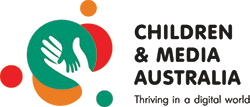Wild Parrots of Telegraph Hill, The

Short takes
Not recommended under 8, PG to 13 (Distressing scenes)

This topic contains:
- overall comments and recommendations
- details of classification and consumer advice lines for Wild Parrots of Telegraph Hill, The
- a review of Wild Parrots of Telegraph Hill, The completed by the Australian Council on Children and the Media (ACCM) on 16 October 2005.
Overall comments and recommendations
| Children under 8 | Due to some distressing scenes, this film is not recommended for children under eight. |
| Children aged 8-13 | Some children between the ages of eight to thirteen would benefit from parental guidance when seeing this film. |
| Children over the age of 13 | Children over the age of thirteen could view this film without parental guidance. |
About the movie
This section contains details about the movie, including its classification by the Australian Government Classification Board and the associated consumer advice lines. Other classification advice (OC) is provided where the Australian film classification is not available.
| Name of movie: | Wild Parrots of Telegraph Hill, The |
| Classification: | G |
| Consumer advice lines: | None |
| Length: | 81 minutes |
ACCM review
This review of the movie contains the following information:
- a synopsis of the story
- use of violence
- material that may scare or disturb children
- sexual references
- nudity and sexual activity
- use of substances
- coarse language
- the movie’s message
A synopsis of the story
The Wild Parrots of Telegraph Hill is a documentary based upon the life and work of Mark Bittner, a “Bohemian St. Francis” who over the course of a number of years develops an unprecedented relationship with a flock of wild, South American parrots living in San Francisco.
A former street musician, Mark spent a number of years living in store rooms, basements and even on hotel roofs searching for his true calling and for meaning in his life. While living in a tiny shack on Telegraph Hill Mark begins to feed a small flock of parrots living nearby. Over the course of the next three years he learns to identify more than thirty birds, their habits and personalities, cares for them, befriends them and studies and documents a community of parrots, in a way that no one has done before.
Throughout the documentary we are introduced to individual members of the flock, such as cool and quiet Conner, who always befriends the outcasts and defends the injured and sick; the crippled bird Tupula whom Mark tries to save; and Mingus, the mover and shaker, who would rather stay inside with Mark and dance to guitar music than fly free with the flock.
What began with a handful of seeds, becomes Mark’s life work and true calling, through the Parrots he learns to better understand himself and society and in the process finds inner peace and true happiness.
Use of violenceinfo
Research shows that children are at risk of learning that violence is an acceptable means of conflict resolution when violence is glamourised, performed by an attractive hero, successful, has few real life consequences, is set in a comic context and / or is mostly perpetrated by male characters with female victims, or by one race against another.
Repeated exposure to violent content can reinforce the message that violence is an acceptable means of conflict resolution. Repeated exposure also increases the risks that children will become desensitised to the use of violence in real life or develop an exaggerated view about the prevalence and likelihood of violence in their own world.
The only violence in the film was perpetrated by birds towards birds, however, it was at times very graphic.
- One bird attacks another bird and keeps biting at the wings until they are raw and bloody.
- There are a number of minor fights and scuffles throughout the documentary.
- Conner fights a bird that is attacking a sick parrot.
- Two birds are sitting on a wire, one is trying to get the other off by relentlessly biting its feet and legs.
- One female bird plucks out nearly half of her feathers and also tries to pluck out her mate’s feathers.
- One bird is seen with nasty gashes on its feet, and some close-up shots show how it leaves a trail of blood along a branch.
- A number of parrots are seen, on different occasions, with eyes that have been cut, pecked or in someway damaged, and also foreheads that are gouged and bloody.
Material that may scare or disturb children
Under fiveinfo
Children under five are most likely to be frightened by scary visual images, such as monsters, physical transformations.
In addition to the above-mentioned scenes, the following scenes could be distressing for children under the age of five:
- There is a close-up of a dying parrot as it struggles through the branches of a tree.
- Mark tells the story of the crippled bird Tupula. It is very sad as he explains how he found her and cared for her and then admits that through his own mistake she was forced to die alone.
- There is a graphic scene in which some baby hawks are ripping a bird apart as they devour it, feathers and all.
- A tearful Mark says good-bye to Mingus, when he is forced to leave his shack and Telegraph Hill.
- A number of stories are recounted about birds that have died and mention is made of environmentalists that want the parrots to be captured and killed.
- Conner is captured and killed by a hawk. There is a graphic photo that shows him pinned down while being grasped in the talons of the hawk.
Aged five to eightinfo
Children aged five to eight will also be frightened by scary visual images and will also be disturbed by depictions of the death of a parent, a child abandoned or separated from parents, children or animals being hurt or threatened and / or natural disasters.
Children in this age group may also be distressed by the above-mentioned scenes.
Aged eight to thirteeninfo
Children aged eight to thirteen are most likely to be frightened by realistic threats and dangers, violence or threat of violence and / or stories in which children are hurt or threatened.
Some children between the ages of eight and thirteen could be distressed by the above mentioned scenes.
Thirteen and overinfo
Children over the age of thirteen are most likely to be frightened by realistic physical harm or threats, molestation or sexual assault and / or threats from aliens or the occult.
While there is nothing in this film that would frighten children over the age of 13, sensitive adolescents could still be upset by some of the scenes described above.
Sexual references
None
Nudity and sexual activity
None
Use of substances
None
Coarse language
None
In a nutshell
The movie’s main message is that all life is one whole, that we are all interconnected, and that animals are like humans, in that they have thoughts, feelings and individual personalities, we need only take the time to see it.
Movie Review Search
Title:
Tip: Leave out the first A, An or The
Age suitability:
Selecting an age will provide a list of movies with content suitable for this age group. Children may also enjoy movies selected via a lower age.
About our colour guide
Content is age appropriate for children this age
Some content may not be appropriate for children this age. Parental guidance recommended
Content is not age appropriate for children this age
CMA thanks the Romeo family for its support

About CMA
Children and Media Australia (CMA) is a registered business name of the Australian Council on Children and the Media (ACCM).
CMA provides reviews, research and advocacy to help children thrive in a digital world.
ACCM is national, not-for-profit and reliant on community support. You can help.
ABN: 16 005 214 531
- Home
- Site Map
- Disclaimer
- © Children and Media Australia 2012 - 2025





